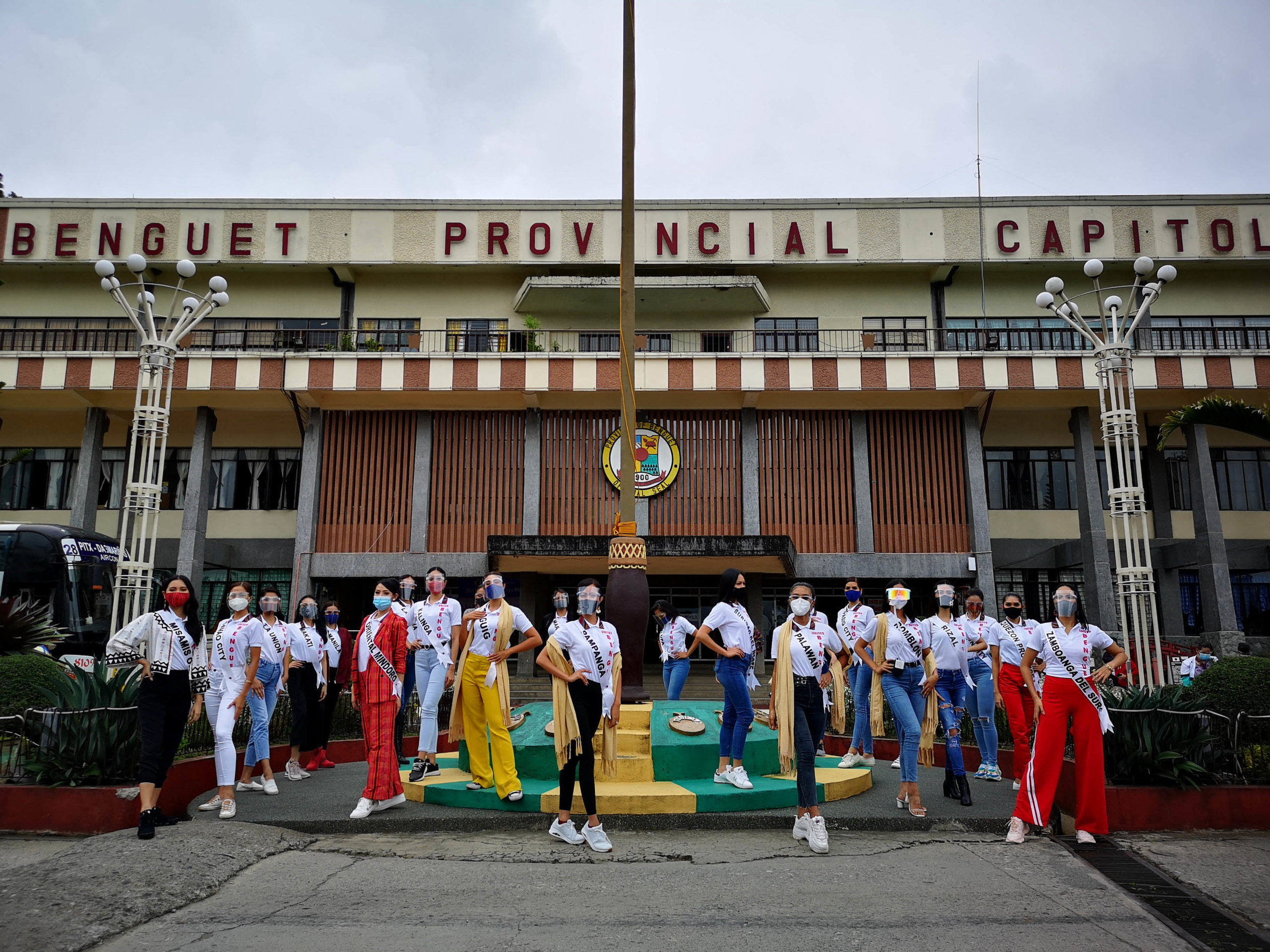
PAGEANT BUBBLE Candidates of the recently held Miss Universe Philippines visit attractions in La Trinidad, Benguet, for a photo shoot. The pageant’s staging in Baguio City has tested the readiness of the summer capital and its nearby areas to host visitors amid strict health protocols during the pandemic. —EV ESPIRITU
LINGAYEN, PANGASINAN—Hills of sand and debris pushed by high waves dot the beaches of Lingayen amid a seven-month furlough that forced every leisure establishment to shut down due to the coronavirus pandemic.
But some beach resorts along Lingayen Gulf have begun clearing the mess to gradually recover from losses.
Among them, El Puerto Marina, which describes itself as a vacation club, resumed operations on Oct. 2, expecting to drum up business. Since then, it has recorded only five bookings despite being the town’s biggest resort.
“Our target clients are people who want to get away from the city and enjoy the sea, but we cannot promote yet the gulf as part of the destination. Tourists can enjoy a safe ‘staycation’ in the resort,” said Andrew Versoza, whose family owns the resort occupying a 5-hectare beachfront property.
Sluggish
El Puerto is among the province’s 300 hotels and resorts allowed to take in tourists who are participating in the “Ridge and Reef” travel corridor that should start the revival of the leisure business in northern Luzon.
But public reception to the reopening of popular destinations has been “sluggish,” said Malu Amor-Elduayan, provincial tourism officer.
It has been the same situation for Baguio City, the first local government to open the travel corridor for its residents and those of four provinces of Ilocos region, including Pangasinan.
Struck by the coronavirus outbreaks days before it allowed the first four tourists to cross its borders on Oct. 1, Baguio had been retooling its reopening strategy. It eased its strict rules for Ilocos residents seeking permission to take in Baguio’s cool air and mountain vistas without compromising mandatory virus testing and other health requirements.
A travel surveillance mobile application, called “Visita” (Visitor Information and Travel Assistance system), directs applicants to book a tour package which dictates where they can go and which hotel to pick. A tour guide supervises their activities.
But tourists are no longer bound to tour packages and are free to choose their own hotels. They must also pay for their own COVID-19 tests.
“Officials observed that the rules were less strict for out-of-town workers and businessmen who make up a larger number of nonresidents who enter the city each day,” said Jovita Ganongan, Cordillera director of the Department of Tourism.
Despite the low turnout when the travel bubble was exclusively for the Ilocos, Baguio reopened its borders to all visitors on Oct. 23.
On the third week of this month, the city hosted the Miss Universe Philippines pageant at Baguio Country Club to become a test case for how a local government could maintain health security for a group of 130 people.
Still scared
The absence of mass transport to carry more tourists around Baguio and the Ilocos region was also considered a problem for reopening, Ganongan said.But she and other tourism officials in the region also share the same fear about travel during the pandemic: People are still scared.
Hotels and resorts have taken pains to assure potential guests that their places are safe. In Bolinao town, also in Pangasinan, El Pescador Resort was allowed to operate but still could not open because its employees were undergoing retraining from the Department of Labor and Employment.
According to former Pangasinan Rep. Jesus Celeste, whose family owns and operates the resort, visitors have shunned tourism destinations because of strict health protocols.
In La Union, provincial tourism officer Adamor Dagang said the province needed to be “well prepared” before it would open its doors to tourists from Luzon.
The provincial government is establishing an online visitor assistance and registration system, called “Region I Visita,” to complement the contact tracing system “Napanam?” (Ilocano term for “where did you come from?”).
“This is a critical requirement for contact tracing and for readiness for a bigger market. We already have a triage system, but we want to fortify it,” Dagang said.
The province is also preparing its tourist destinations like San Juan town to ensure that they are safe for tourists and for a wider market, he added.La Union has 160 hotels and lodging houses that have been cleared to reopen, but only 48 are operational at half their capacity. —WITH A REPORT FROM VINCENT CABREZA

